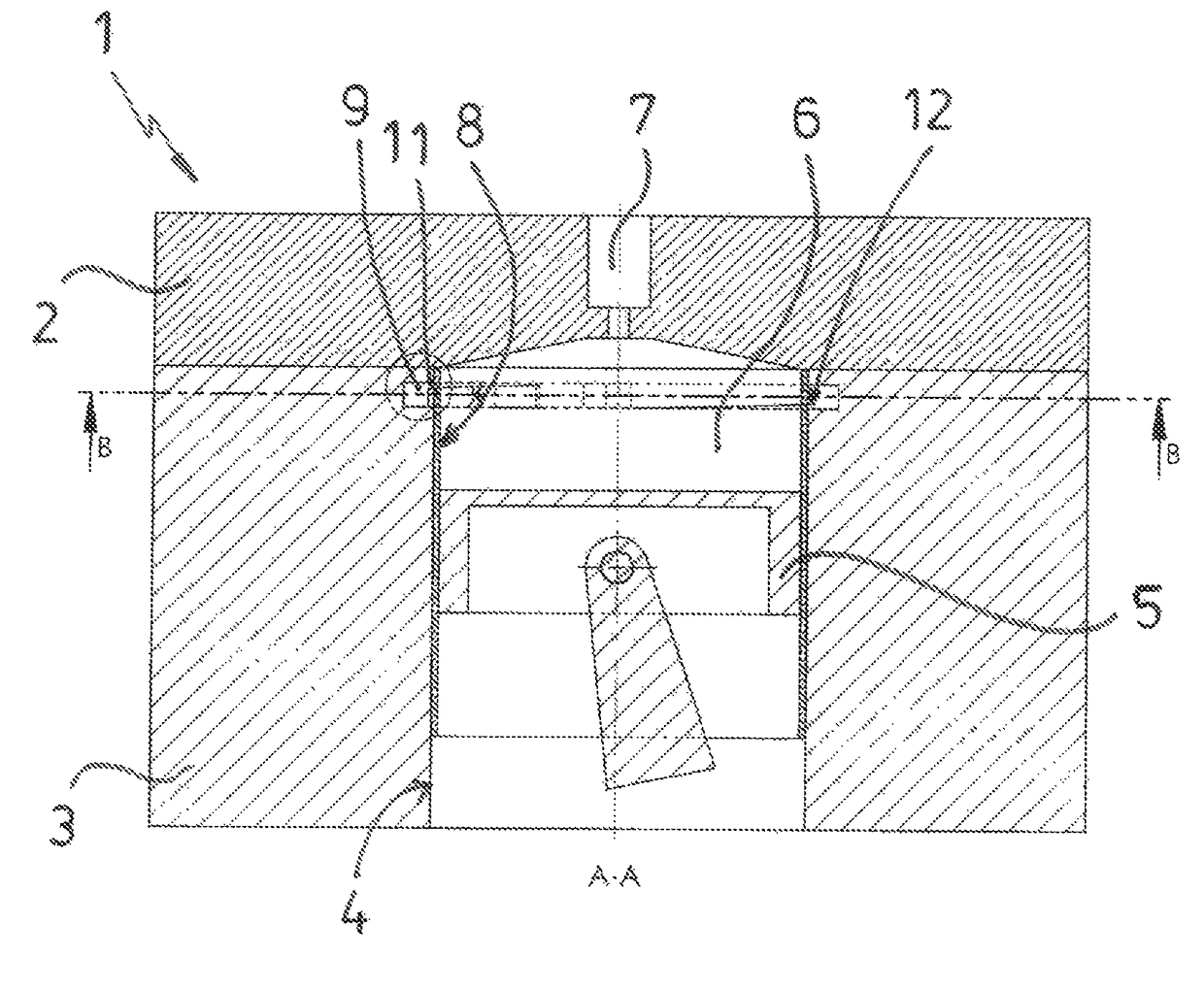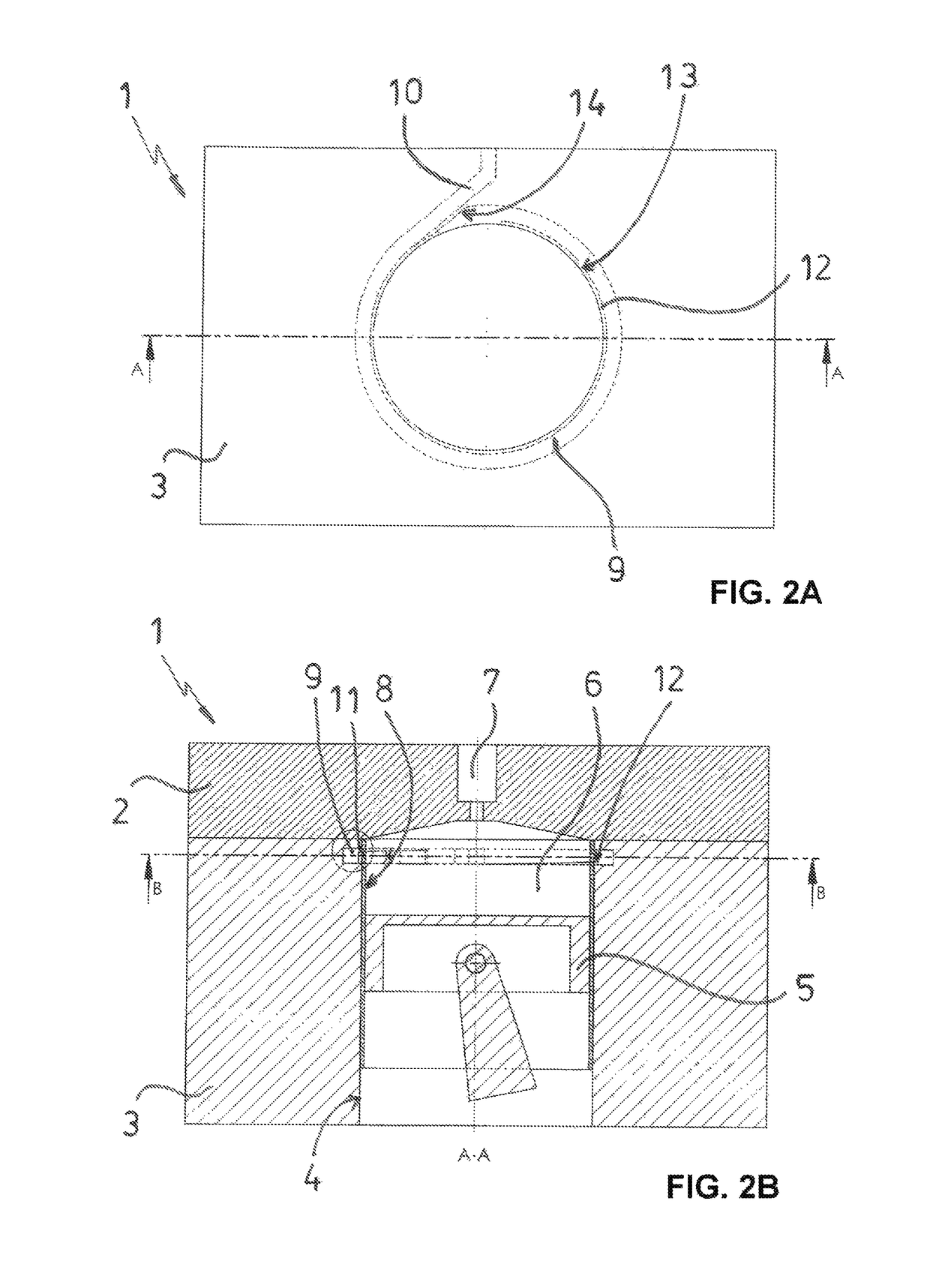Method for introducing microwave energy into a combustion chamber of a combustion engine and combustion engine
a combustion engine and combustion engine technology, applied in the direction of engine ignition, electrical equipment, plasma technique, etc., can solve problems such as efficiency degradation, and achieve the effects of improving efficiency, facilitating precise control of the beginning, and low emission combustion
- Summary
- Abstract
- Description
- Claims
- Application Information
AI Technical Summary
Benefits of technology
Problems solved by technology
Method used
Image
Examples
Embodiment Construction
[0046]In the subsequently described figures the invention is illustrated in an exemplary manner based on various embodiments. Identical or like elements in the individual figures are provided with identical reference numerals.
[0047]The figures illustrate a schematic detail of an internal combustion engine 1 with a cylinder head 2 and an engine block 3. The engine block 3 includes a cylinder 4 with a piston 5 that is moveable therein and a combustion chamber 6 partially arranged in the cylinder head 2 above the cylinder 4. A schematically indicated inlet 7 for the fuel air mix leads into the combustion chamber 6. Outlets for the exhaust gas are not illustrated since the outlets can be configured in ways that are well known to a person skilled in the art. The schematically indicated cylinder head 2 with a central inlet 7 for the fuel air mixture can certainly also have additional spark plugs or outlets for the exhaust gases. The spark plugs can be particularly configured microwave spa...
PUM
 Login to View More
Login to View More Abstract
Description
Claims
Application Information
 Login to View More
Login to View More - R&D
- Intellectual Property
- Life Sciences
- Materials
- Tech Scout
- Unparalleled Data Quality
- Higher Quality Content
- 60% Fewer Hallucinations
Browse by: Latest US Patents, China's latest patents, Technical Efficacy Thesaurus, Application Domain, Technology Topic, Popular Technical Reports.
© 2025 PatSnap. All rights reserved.Legal|Privacy policy|Modern Slavery Act Transparency Statement|Sitemap|About US| Contact US: help@patsnap.com



